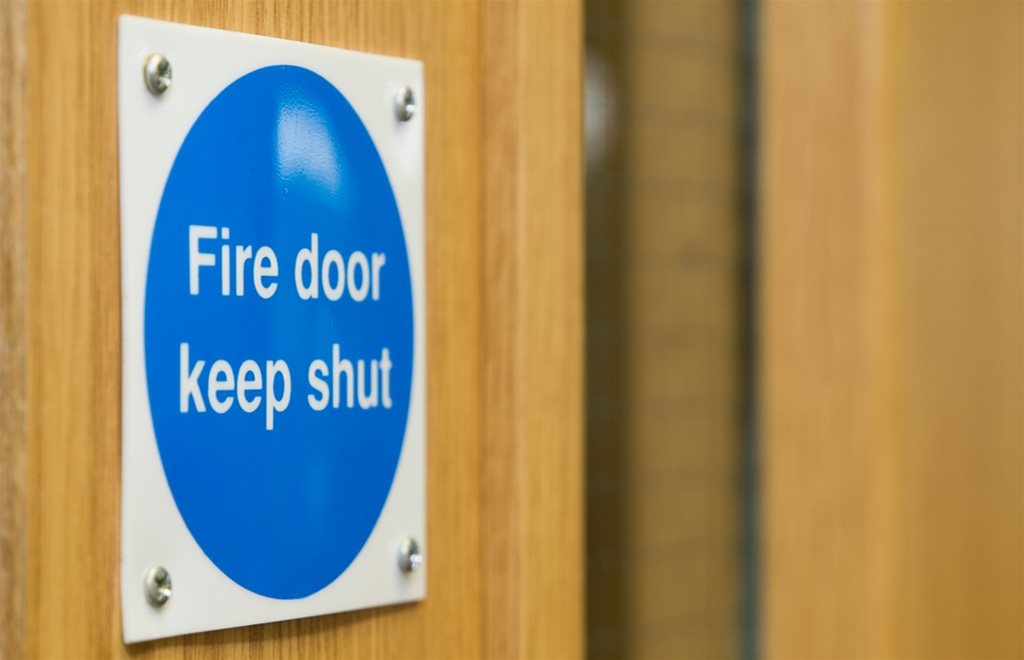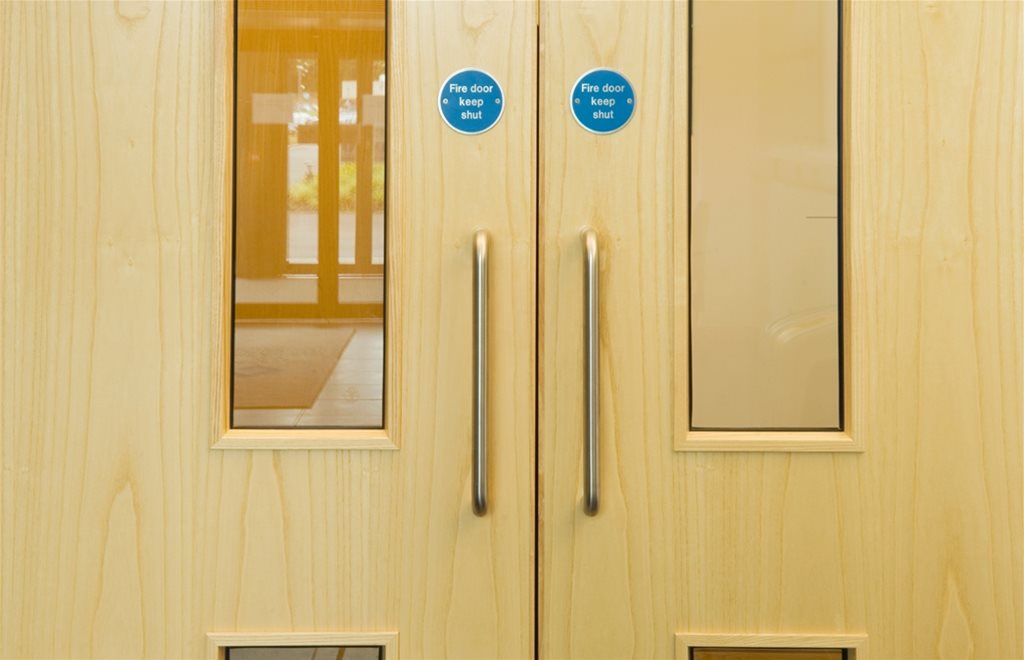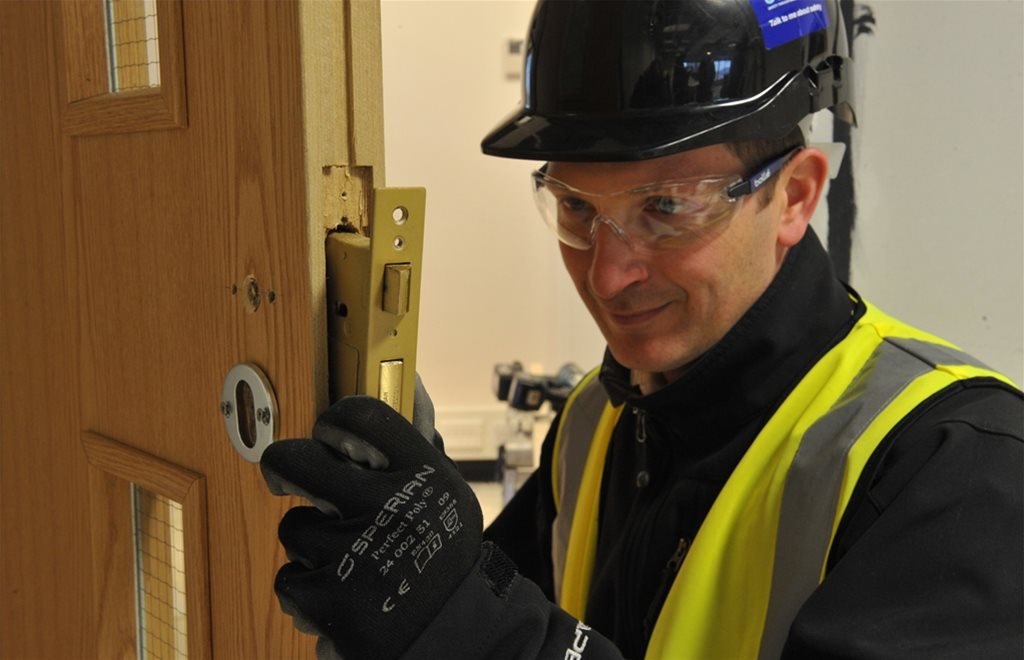Helen Hewitt discusses the huge changes the Fire Safety Bill and Building Safety Bill will bring to the fire safety sector, focusing on fire doors
NEW LEGISLATION, which is expected to be introduced in the form of the Fire Safety Bill (FSB) and Building Safety Bill (BSB), will have a significant impact on the fire safety sector. Impacting industry standards and training needs, the bills will bring about some of the biggest changes the fire safety sector has experienced in recent years.
In this article, we will consider where the role of fire doors is expected to feature in the new legislation; how third party certification (TPC) can ensure that fit for purpose fire doors are specified; as well as the role of quality training provision in driving forward best practice.
New legislation
Raising the level of training and product standards for the fire safety sector, the two bills will help improve fire safety more broadly across the entire industry. Both bills are currently progressing through parliament, with the FSB expected to become an Act of Parliament later this year and the BSB in 2022.
Each bill has implications for fire door safety. The FSB will introduce changes to the Regulatory Reform (Fire Safety) Order 2005 [FSO] to clarify that the responsible person or dutyholder for multi occupant, residential buildings must manage and reduce the risk of fire for the structure and external walls of the building (including cladding, balconies and windows), as well as entrance doors to individual flats and common parts of the building.
The clarification offered by the FSB will help empower fire and rescue services to take enforcement action and hold building owners to account if they are not compliant. The bill may bring windows, which play a key role in firestopping, into consideration for the first time with the inclusion of facades in risk assessments. At present windows are not considered a fire safety risk – however, with the introduction of new legislation this may change.
Significant changes affecting fire door specification, installation and maintenance will be introduced by the BSB. This legislation will appoint the Health and Safety Executive as the building safety regulator, which will oversee the new rigorous regime for higher risk buildings and drive improvements in safety and performance standards for all buildings.
In addition, it will introduce the role of the construction products regulator (CPR) adopted by the Office for Product Safety and Standards, which will be responsible for market surveillance, oversight and enforcement at local and national level. The CPR will give advice and support to the industry and technical advice to the government.
The need to effect real and lasting change within the construction industry has been identified in the proposed legislation. To adopt the cultural change needed within the industry, the BSB seeks to incentivise compliance while providing a much needed stronger and clearer framework for the oversight of construction products.
These changes will have a marked impact on the fire safety sector and will be split into two key areas: product performance and the competency of individuals. Products themselves will face close scrutiny – particularly those considered to be safety critical – and competency levels for roles throughout the supply chain will need to be clearly evidenced.
Added to this, information for construction products must accurately describe the product and its performance, and be able to be communicated and retained digitally. We believe these are positive changes that will improve performance and accountability, which ultimately improves fire safety.

Fit for purpose
At the heart of the installation and ongoing maintenance of any product is the need for accurate and detailed information concerning product performance; but for fire doors it can make the difference between a door that can stop the spread of fire and smoke in the event of a fire, and a fire door that will not perform as it should.
That is the precise reason why at the British Woodworking Federation (BWF) Fire Door Alliance, we believe that it is crucial for all fire doors to be third party certificated. Through the TPC process, fire door manufacturers and processors are audited by an independent third party to check that the product is tested appropriately and produced to a consistent standard. This involves meeting specific criteria, which for BWF Fire Door Alliance members include the following:
- fire testing – the fire resistance of a fire door assembly is determined by subjecting full sized constructions to tests in accordance with one of two of the fire test standards listed overleaf at a UKAS accredited facility, and the test results being used to generate the scope of certification:
- BS 476-22: 1987: Fire tests on building materials and structures. Method for determination of the fire resistance of non-loadbearing elements of construction
- BS EN 1634-1: 2014 + A1: 2018: Fire resistance and smoke control tests for door and shutter assemblies, openable windows and elements of building hardware. Fire resistance
- test for door and shutter assemblies and openable windows
- manufacturing process audit – BWF Fire Door Alliance members are independently audited by the UKAS accredited product certification body operating their chosen certification scheme (either Certifire or BM TRADA Q-Mark), and this confirms that appropriate manufacturing and management processes are in place to deliver consistency in their fire door production
- regular audits – the fire door is subjected to frequent testing on sampled products to make sure that the test results are repeatable
TPC provides independent proof of the performance of a fire door and ensures that the performance data was not a one off result. This vital evidence brings building owners peace of mind that their doors will perform as needed in the event of a fire. The TPC process also allows traceability throughout the supply chain and gives access to important maintenance information.
A fire door manufactured or modified by a BWF Fire Door Alliance member carries a label that shows a unique code. This provides access to vital information, such as the name of the fire door manufacturer or processor, the certification, and the product specification and production records.
For ongoing maintenance, this information is essential because it allows replacement components to be sourced which conform to the certification. This is important, as ongoing performance will need to be confirmed – for example, as part of a fire risk assessment undertaken as a requirement of the FSO. The BWF Fire Door Alliance believes that a regulated regime of independent TPC of fire doors should be enshrined in law.
In its pre legislative scrutiny of the BSB, the Housing, Communities and Local Government Committee has recommended that details of test failures and rerun tests should be made publicly available, in addition to the establishment of an independent and unified system of TPC. As an organisation, we will continue to lobby for TPC of fire doors to become mandated.

Competencies and standards
As well as ensuring that products are fit for purpose, improving competency and standards across the fire safety sector is just as important in maximising fire safety. The introduction of a more stringent regulatory framework and the focus on accountability and standards through the upcoming new laws will help create a more responsible construction industry – and we welcome this.
A greater emphasis on the importance of high quality training provision, to ensure that individuals fulfilling roles in the construction process have the correct skills, knowledge and experience, will be placed on it by the requirement for higher levels of competency. The installation and ongoing maintenance of a fire door is fundamental to its performance and ability to prevent the spread of smoke and fire.
More complex than a standard interior door, a fire door is a multifarious system of components that need to work together to save lives in the event of a fire. Specialist training is therefore vital. To help address fire door installation related knowledge gaps and upskill professionals across the country, the BWF launched the fire door installation awareness course in partnership with the National Open College Network (NOCN).
This quality assured training course will enhance the skills of installers and help drive up standards across the construction industry, by allowing contractors to better manage compliance with fire safety standards. Added to this, the BWF has produced, and continues to develop, informative training materials to support the entire construction supply chain to foster a better understanding of fire doors, TPC and fire door installation.
Essential information about fire door regulations, component compatibility, the responsibility and management of fire doors as well as an introduction to TPC is contained in these materials – information that can be used as part of an individual’s continuous professional development.

Driving legislation forward
The BSB and FSB are essential pieces of legislation and the focus on raising standards is widely welcomed. However, legislative tools have been slow to react following the Grenfell tragedy. In 2019, an investigation into the effectiveness of all fire doors undertaken by the Ministry of Housing, Communities and Local Government (MHCLG), found that the timber fire doors tested all met the required standards, but that three quarters of the glass reinforced polymer foam filled fire doors that were tested failed to maintain fire resistance for the full 30 minutes.
Currently in 2021 – almost two years after the investigation by MHCLG – the vital legislation that is needed to protect building occupants across the UK is still continuing its journey through parliament and is not guaranteed to mandate the TPC of fire doors. Although the COVID-19 pandemic has understandably impacted on the progression of the legislation, the importance of these lifesaving changes should not be overlooked or further delayed.
Fire doors are vital to protecting building occupants from the spread of smoke and fire, and can make the difference between life and death. By specifying fire doors which are third party certified and working with installers who can demonstrate their competence in the installation of fire doors, building owners and occupants can have peace of mind that their fire doors will be fit for purpose and perform as designed.
But we cannot allow the new legislation to become a ‘full stop’ in the conversation about fire safety best practice. The BWF will continue its dialogue with the government to ensure that accountability and high performance
of fire safety products remain at the top of the agenda
Helen Hewitt is chief executive officer of the British Woodworking Federation